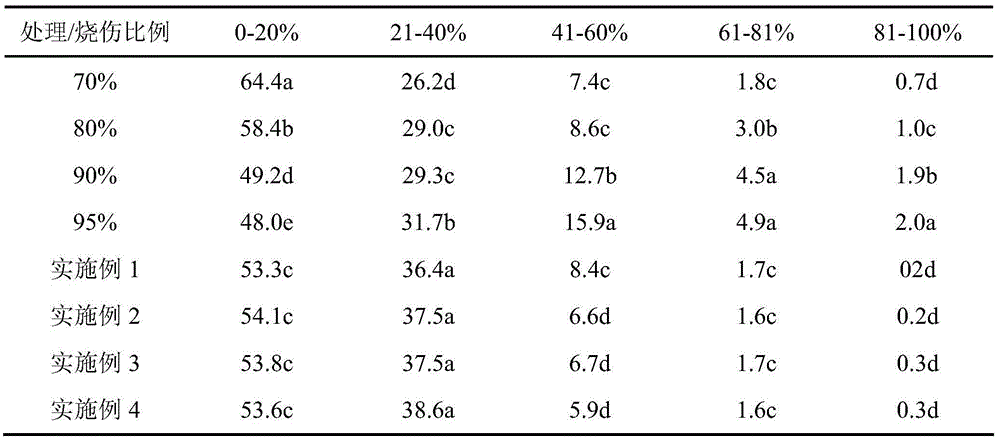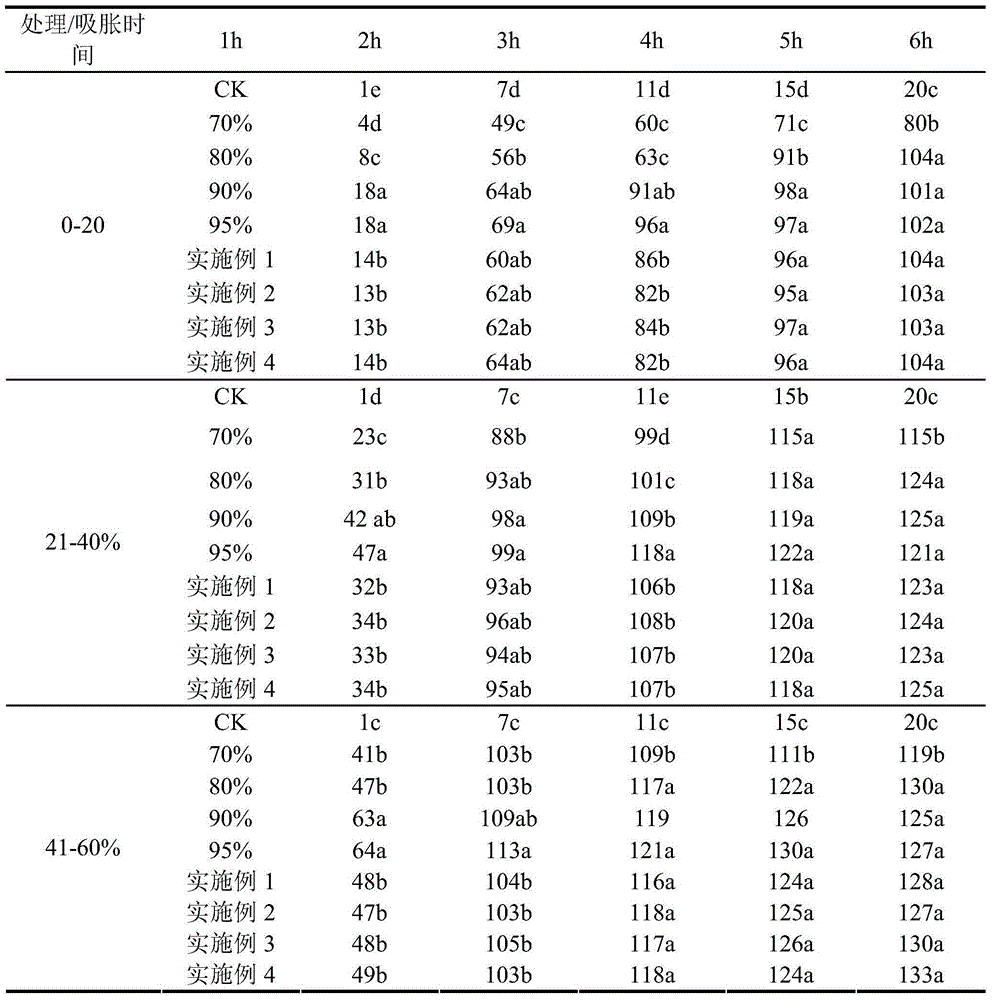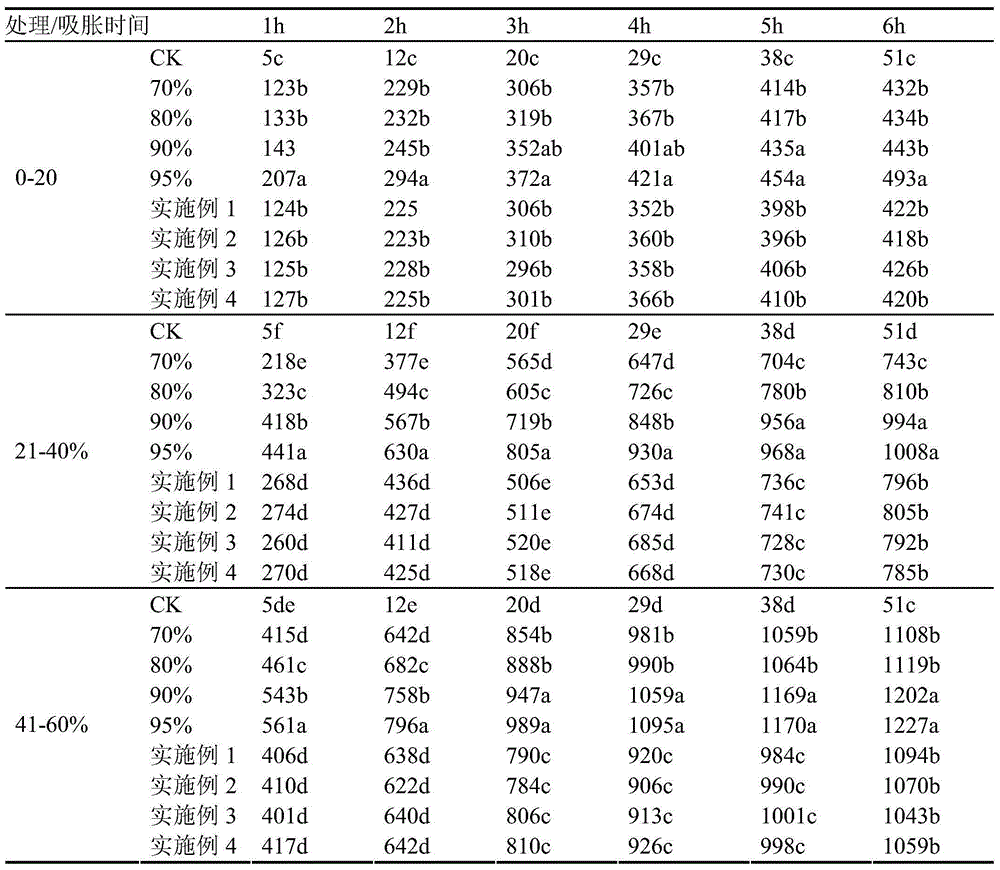Method for breaking hardness of licorice seeds by using foamed acid
A foaming acid and seed technology, which is applied in the fields of seed and rhizome treatment, application, agriculture, etc., can solve the problems of difficulty in emergence, decreased seed vigor, seed absorption or heat generation, etc., so as to improve the seedling rate in the field and reduce the burn area. , the effect of increasing germination speed
- Summary
- Abstract
- Description
- Claims
- Application Information
AI Technical Summary
Problems solved by technology
Method used
Image
Examples
Embodiment 1
[0029] A kind of method of breaking the hardness of Radix Glycyrrhizae seed with foam acid of the present embodiment, carry out according to the following steps:
[0030] 1. Clean and select the Ural licorice seeds to make the seeds clean to 99.9%;
[0031] 2. Preparation of foam acid: add 0.1 g of sulfonic acid to 99.9 g of 80% sulfuric acid, and let it stand for 2 hours;
[0032] Three, get the licorice uralensis seeds in the 1.2kg step one and mix with the foam acid prepared in the 100g step two, stir for 3min;
[0033] 4. Put the seeds mixed with foam acid in step 3 into a pool covered with plastic film, and treat at 15°C for 6 hours; during this period, turn over once every 1.5 hours;
[0034] 5. Rinse the seeds treated in step 4 with a high-pressure water gun with a pressure of 0.6 MPa for 1 min, dry the water, and dry them in a cool and ventilated place to obtain licorice seeds that have been broken;
[0035] Six, the licorice seed obtained in step five is screened th...
Embodiment 2
[0037] A kind of method of breaking the hardness of Radix Glycyrrhizae seed with foam acid of the present embodiment, carry out according to the following steps:
[0038] 1. Clean and select the seeds of Glycyrrhizae glabra so that the purity of the seeds can reach 99.9%;
[0039] 2. Preparation of foam acid: add 0.1 g of sulfonic acid to 99.9 g of 80% sulfuric acid, and let it stand for 3 hours;
[0040] 3. Mix 1.2kg of Glycyrrhizae glabra seeds in step 1 with 100g of foam acid prepared in step 1, and stir for 3 minutes;
[0041] 4. Put the seeds mixed with foam acid in step 3 into a plastic basin, and treat them at 20°C for 5.2 hours; during this period, they will be turned over every 1.5 hours;
[0042] 5. Rinse the seeds treated in step 4 with a high-pressure water gun with a pressure of 0.5 MPa for 2 minutes, dry the water, and dry them in a cool and ventilated place to obtain licorice glabra seeds that have been broken;
[0043] Six, the licorice seed obtained in step ...
Embodiment 3
[0045] A kind of method of breaking the hardness of Radix Glycyrrhizae seed with foam acid of the present embodiment, carry out according to the following steps:
[0046] 1. Clean and select the Ural licorice seeds to make the seeds clean to 99.9%;
[0047] 2. Preparation of foam acid: add 0.1 g of sulfonic acid to 99.9 g of 80% sulfuric acid, and let it stand for 1 hour;
[0048] 3. Get 1.2kg of licorice uralensis seeds in step 1 and mix them with the foam acid prepared in 100g of step 1, and stir for 3 minutes;
[0049] 4. Put the seeds mixed with foam acid in step 3 into a plastic bucket, and treat them at 30°C for 4 hours; during this period, they will be turned over every 1.5 hours;
[0050]5. Rinse the seeds treated in step 4 with a high-pressure water gun with a pressure of 0.4 MPa for 2.5 minutes, dry the water, and dry them in a cool and ventilated place to obtain licorice seeds that have been broken;
[0051] Six, the licorice seed obtained in step five is screened...
PUM
 Login to View More
Login to View More Abstract
Description
Claims
Application Information
 Login to View More
Login to View More - R&D
- Intellectual Property
- Life Sciences
- Materials
- Tech Scout
- Unparalleled Data Quality
- Higher Quality Content
- 60% Fewer Hallucinations
Browse by: Latest US Patents, China's latest patents, Technical Efficacy Thesaurus, Application Domain, Technology Topic, Popular Technical Reports.
© 2025 PatSnap. All rights reserved.Legal|Privacy policy|Modern Slavery Act Transparency Statement|Sitemap|About US| Contact US: help@patsnap.com



